The global air traffic control (ATC) market is expected to grow from USD 9.3 billion in 2019 to USD 13.53 billion by 2027, at a CAGR of 4.8% during the forecast period 2020-2027.
Air traffic control (ATC) is mainly used to navigate aircraft through controlled airspace and on the ground. The service is facilitated by ground-based air traffic controllers who also gives advisory services to aircraft. It has a broad range of applications such as to provide information, support for pilots, expedite and organize the flow of air traffic and prevent collisions. It is also used in defensive as well as security role which is operated by the military. By using radar, ATC monitors the exact location of aircraft in the airspace. And with the help of radio, ATC communicates with assigned pilots. The air traffic control (ATC) market is driven by a shift in the consumer preferences toward travelling by air as well as an increased consumer spending.
This study delivers a comprehensive analysis of airspaces, applications and regions. The airspace segment includes remote tower, ATCT, TRACON and ARTCC. ATCT segment is expected to show the highest growth over the forecast period. It is primarily due to a large number of ATCT towers present across globally. The application segment includes automation, surveillance, navigation and communication. Surveillance segment is expected to show the most significant growth over the forecast period. It plays a vital role as it accurately detects the location of aircraft as it is beneficial in maintaining a specified distance between aircraft according to the separation standards. Flying along fixed routes with reduced restrictions as well as to utilize the proper airspace, result in generating higher demand for accurate surveillance. It is used to detect and minimize potential conflicts related to airspace. It supports reduction in safe altitude warnings.
The market has been divided into North America, Europe, Asia-Pacific, Middle East & Africa, and South America. North America and Europe have the largest share in the air traffic control (ATC) market. It is due to increased initiatives by the government to secure aircraft and air traffic. Also, Asia-Pacific region is expected to show the significant share as the government is focusing more on efficient infrastructure.
Some of the notable players in the air traffic control (ATC) market are BAE System, Indra Sistemas, Frequentis AG, Harris Corporation, Adacel Technologies, Leonardo S.p.A, Northrop Grumman Corporatio, NATS Holding, Raytheon Company, Thales Group, Honeywell Inc and Saab AB. Indra Sistemas is managing the upper airspace of China. Also, Harris Corporation received a contract to develop India's ATM communications infrastructure. Moreover, Saab AB installed various digital towers in Sweden for the Scandinavian Mountains Airport.
This study forecasts revenue growth at global, regional, and country levels from 2020 to 2027. Fior Markets has segmented the market based on below-mentioned segments:
Global Air Traffic Control (ATC) Market Analysis And Forecast, By Airspace
Global Air Traffic Control (ATC) Market Analysis And Forecast, By Application
Global Air Traffic Control (ATC) Market Analysis And Forecast, By Regional Analysis
Report Description:
1. Introduction
1.1. Objectives of the Study
1.2. Market Definition
1.3. Research Scope
1.4. Currency
1.5. Key Target Audience
2. Research Methodology and Assumptions
3. Executive Summary
4. Premium Insights
4.1. Porter’s Five Forces Analysis
4.2. Value Chain Analysis
4.3. Top Investment Pockets
4.3.1. Market Attractiveness Analysis By Airspace
4.3.2. Market Attractiveness Analysis By Application
4.3.3. Market Attractiveness Analysis By Region
4.4. Industry Trends
5. Market Dynamics
5.1. Market Evaluation
5.2. Drivers
5.3. Restrains
5.4. Challenges
5.5. Opportunities
6. Global Air Traffic Control (ATC) Market Analysis and Forecast, By Airspace
6.1. Segment Overview
6.2. Remote Tower
6.3. ATCT
6.4. TRACON
6.5. ARTCC
7. Global Air Traffic Control (ATC) Market Analysis and Forecast, By Application
7.1. Segment Overview
7.2. Automation
7.3. Surveillance
7.4. Navigation
7.5. Communication
8. Global Air Traffic Control (ATC) Market Analysis and Forecast, By Regional Analysis
8.1. Segment Overview
8.2. North America
8.2.1. U.S.
8.2.2. Canada
8.2.3. Mexico
8.3. Europe
8.3.1. Germany
8.3.2. France
8.3.3. U.K.
8.3.4. Italy
8.3.5. Spain
8.4. Asia-Pacific
8.4.1. Japan
8.4.2. China
8.4.3. India
8.5. South America
8.5.1. Brazil
8.6. Middle East and Africa
8.6.1. UAE
8.6.2. South Africa
9. Global Air Traffic Control (ATC) Market-Competitive Landscape
9.1. Overview
9.2. Market Share of Key Players in Global Air Traffic Control (ATC) Market
9.2.1. Global Company Market Share
9.2.2. North America Company Market Share
9.2.3. Europe Company Market Share
9.2.4. APAC Company Market Share
9.3. Competitive Situations and Trends
9.3.1. Product Launches and Developments
9.3.2. Partnerships, Collaborations, and Agreements
9.3.3. Mergers & Acquisitions
9.3.4. Expansions
10. Company Profiles
10.1. BAE System
10.1.1. Business Overview
10.1.2. Company Snapshot
10.1.3. Company Market Share Analysis
10.1.4. Company Product Portfolio
10.1.5. Recent Developments
10.1.6. SWOT Analysis
10.2. Indra Sistemas
10.2.1. Business Overview
10.2.2. Company Snapshot
10.2.3. Company Market Share Analysis
10.2.4. Company Product Portfolio
10.2.5. Recent Developments
10.2.6. SWOT Analysis
10.3. Frequentis AG
10.3.1. Business Overview
10.3.2. Company Snapshot
10.3.3. Company Market Share Analysis
10.3.4. Company Product Portfolio
10.3.5. Recent Developments
10.3.6. SWOT Analysis
10.4. Harris Corporation
10.4.1. Business Overview
10.4.2. Company Snapshot
10.4.3. Company Market Share Analysis
10.4.4. Company Product Portfolio
10.4.5. Recent Developments
10.4.6. SWOT Analysis
10.5. Adacel Technologies
10.5.1. Business Overview
10.5.2. Company Snapshot
10.5.3. Company Market Share Analysis
10.5.4. Company Product Portfolio
10.5.5. Recent Developments
10.5.6. SWOT Analysis
10.6. Leonardo S.p.A
10.6.1. Business Overview
10.6.2. Company Snapshot
10.6.3. Company Market Share Analysis
10.6.4. Company Product Portfolio
10.6.5. Recent Developments
10.6.6. SWOT Analysis
10.7. Northrop Grumman Corporation
10.7.1. Business Overview
10.7.2. Company Snapshot
10.7.3. Company Market Share Analysis
10.7.4. Company Product Portfolio
10.7.5. Recent Developments
10.7.6. SWOT Analysis
10.8. NATS Holding
10.8.1. Business Overview
10.8.2. Company Snapshot
10.8.3. Company Market Share Analysis
10.8.4. Company Product Portfolio
10.8.5. Recent Developments
10.8.6. SWOT Analysis
10.9. Raytheon Company
10.9.1. Business Overview
10.9.2. Company Snapshot
10.9.3. Company Market Share Analysis
10.9.4. Company Product Portfolio
10.9.5. Recent Developments
10.9.6. SWOT Analysis
10.10. Thales Group
10.10.1. Business Overview
10.10.2. Company Snapshot
10.10.3. Company Market Share Analysis
10.10.4. Company Product Portfolio
10.10.5. Recent Developments
10.10.6. SWOT Analysis
List of Table
1. Global Air Traffic Control (ATC) Market, By Airspace, 2017-2027 (USD Billion)
2. Global Remote Tower, Air Traffic Control (ATC) Market, By Region, 2017-2027 (USD Billion)
3. Global ATCT, Air Traffic Control (ATC) Market, By Region, 2017-2027 (USD Billion)
4. Global TRACON, Air Traffic Control (ATC) Market, By Region, 2017-2027 (USD Billion)
5. Global ARTC, Air Traffic Control (ATC) Market, By Region, 2017-2027 (USD Billion)
6. Global Air Traffic Control (ATC) Market, By Application, 2017-2027 (USD Billion)
7. Global Automation Air Traffic Control (ATC) Market, By Region, 2017-2027 (USD Billion)
8. Global Surveillance Air Traffic Control (ATC) Market, By Region, 2017-2027 (USD Billion)
9. Global Navigation Air Traffic Control (ATC) Market, By Region, 2017-2027 (USD Billion)
10. Global Communication Air Traffic Control (ATC) Market, By Region, 2017-2027 (USD Billion)
11. North America Air Traffic Control (ATC) Market, By Airspace, 2017-2027 (USD Billion)
12. North America Air Traffic Control (ATC) Market, By Application, 2017-2027 (USD Billion)
13. U.S. Air Traffic Control (ATC) Market, By Airspace, 2017-2027 (USD Billion)
14. U.S. Air Traffic Control (ATC) Market, By Application, 2017-2027 (USD Billion)
15. Canada Air Traffic Control (ATC) Market, By Airspace, 2017-2027 (USD Billion)
16. Canada Air Traffic Control (ATC) Market, By Application, 2017-2027 (USD Billion)
17. Mexico Air Traffic Control (ATC) Market, By Airspace, 2017-2027 (USD Billion)
18. Mexico Air Traffic Control (ATC) Market, By Application, 2017-2027 (USD Billion)
19. Europe Air Traffic Control (ATC) Market, By Airspace, 2017-2027 (USD Billion)
20. Europe Air Traffic Control (ATC) Market, By Application, 2017-2027 (USD Billion)
21. Germany Air Traffic Control (ATC) Market, By Airspace, 2017-2027 (USD Billion)
22. Germany Air Traffic Control (ATC) Market, By Application, 2017-2027 (USD Billion)
23. France Air Traffic Control (ATC) Market, By Airspace, 2017-2027 (USD Billion)
24. France Air Traffic Control (ATC) Market, By Application, 2017-2027 (USD Billion)
25. U.K. Air Traffic Control (ATC) Market, By Airspace, 2017-2027 (USD Billion)
26. U.K. Air Traffic Control (ATC) Market, By Application, 2017-2027 (USD Billion)
27. Italy Air Traffic Control (ATC) Market, By Airspace, 2017-2027 (USD Billion)
28. Italy Air Traffic Control (ATC) Market, By Application, 2017-2027 (USD Billion)
29. Spain Air Traffic Control (ATC) Market, By Airspace, 2017-2027 (USD Billion)
30. Spain Air Traffic Control (ATC) Market, By Application, 2017-2027 (USD Billion)
31. Asia Pacific Air Traffic Control (ATC) Market, By Airspace, 2017-2027 (USD Billion)
32. Asia Pacific Air Traffic Control (ATC) Market, By Application, 2017-2027 (USD Billion)
33. Japan Air Traffic Control (ATC) Market, By Airspace, 2017-2027 (USD Billion)
34. Japan Air Traffic Control (ATC) Market, By Application, 2017-2027 (USD Billion)
35. China Air Traffic Control (ATC) Market, By Airspace, 2017-2027 (USD Billion)
36. China Air Traffic Control (ATC) Market, By Application, 2017-2027 (USD Billion)
37. India Air Traffic Control (ATC) Market, By Airspace, 2017-2027 (USD Billion)
38. India Air Traffic Control (ATC) Market, By Application, 2017-2027 (USD Billion)
39. South America Air Traffic Control (ATC) Market, By Airspace, 2017-2027 (USD Billion)
40. South America Air Traffic Control (ATC) Market, By Application, 2017-2027 (USD Billion)
41. Brazil Air Traffic Control (ATC) Market, By Airspace, 2017-2027 (USD Billion)
42. Brazil Air Traffic Control (ATC) Market, By Application, 2017-2027 (USD Billion)
43. Middle East and Africa Air Traffic Control (ATC) Market, By Airspace, 2017-2027 (USD Billion)
44. Middle East and Africa Air Traffic Control (ATC) Market, By Application, 2017-2027 (USD Billion)
45. UAE Air Traffic Control (ATC) Market, By Airspace, 2017-2027 (USD Billion)
46. UAE Air Traffic Control (ATC) Market, By Application, 2017-2027 (USD Billion)
47. South Africa Air Traffic Control (ATC) Market, By Airspace, 2017-2027 (USD Billion)
48. South Africa Air Traffic Control (ATC) Market, By Application, 2017-2027 (USD Billion)
List of Figures
1. Global Air Traffic Control (ATC) Market Segmentation
2. Global Air Traffic Control (ATC) Market: Research Methodology
3. Market Size Estimation Methodology: Bottom-Up Approach
4. Market Size Estimation Methodology: Top-Down Approach
5. Data Triangulation
6. Porter’s Five Forces Analysis
7. Value Chain Analysis
8. Global Air Traffic Control (ATC) Market Attractiveness Analysis By Airspace
9. Global Air Traffic Control (ATC) Market Attractiveness Analysis By Application
10. Global Air Traffic Control (ATC) Market Attractiveness Analysis By Region
11. Global Air Traffic Control (ATC) Market: Dynamics
12. Global Air Traffic Control (ATC) Market Share by Airspace(2020 & 2027)
13. Global Air Traffic Control (ATC) Market Share by Application(2020 & 2027)
14. Global Air Traffic Control (ATC) Market Share by Regions (2020 & 2027)
15. Global Air Traffic Control (ATC) Market Share by Company (2019)
Market research is a method of gathering, assessing and deducing data & information about a particular market. Market research is very crucial in these days. The techniques analyze about how a product/service can be offered to the market to its end-customers, observe the impact of that product/service based on the past customer experiences, and cater their needs and demands. Owing to the successful business ventures, accurate, relevant and thorough information is the base for all the organizations because market research report/study offers specific market related data & information about the industry growth prospects, perspective of the existing customers, and the overall market scenario prevailed in past, ongoing present and developing future. It allows the stakeholders and investors to determine the probability of a business before committing substantial resources to the venture. Market research helps in solving the marketing issues challenges that a business will most likely face.
Market research is valuable because of the following reasons:
Our research report features both the aspects; qualitative and quantitative. Qualitative part provides insights about the market driving forces, potential opportunities, customer’s demands and requirement which in turn help the companies to come up with new strategies in order to survive in the long run competition. The quantitative segment offers the most credible information related to the industry. Based on the data gathering, we use to derive the market size and estimate their future growth prospects on the basis of global, region and country.
Our market research process involves with the four specific stages.

Data Collection: This stage of the market research process involves with the gathering and collecting of the market/industry related data from the sources. There are basically two types of research methods:
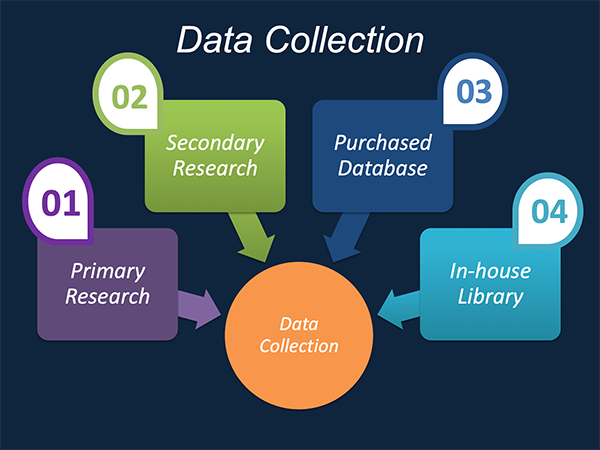
Data Synthesis: This stage includes the evaluation and assessment of all the data acquired from the primary and secondary research. It likewise includes in evaluating the information for any disparity watched while information gathering identified with the market. The data & information is gathered with consideration to the heterogeneity of sources. Scientific and statistical methods are implemented for synthesizing dissimilar information sets and provide the relevant data which is fundamental for formulating strategies. Our organization has broad involvement with information amalgamation where the information goes through different stages:


Market Formulation & Deduction: The last stage includes assigning the data & information in a suitable way in order to derive market size. Analyst reviews and domain based opinions based on holistic approach of market estimation combined with industry investigation additionally features a crucial role in this stage.
This stage includes with the finalization of the market size and numbers that we have gathered from primary and secondary research. With the data & information addition, we ensure that there is no gap in the market information. Market trend analysis is finished by our analysts by utilizing data extrapolation procedures, which give the most ideal figures to the market.
Data Validation: Validation is the most crucial step in the process. Validation & re-validation through scientifically designed technique and process that helps us finalize data-points to be used for final calculations. This stage also involves with the data triangulation process. Data triangulation generally implicates the cross validation and matching the data which has been collected from primary and secondary research methods.





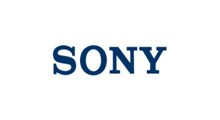

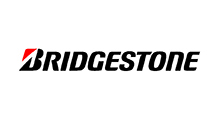

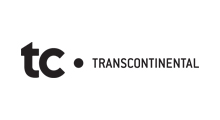















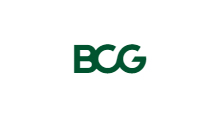




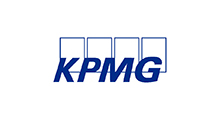
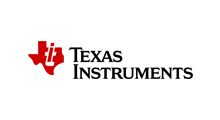



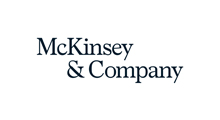

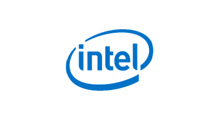







Free Customization
Countries can be added on demand
Free yearly update on purchase of Multi/Corporate User License
Companies served till date

We serve our customers 24x7 for 365 days through calls, emails and live chat options.

Huge database of exceptional market reports bringing market intelligence to your fingertips.

SSL enabled, we offer you various secured payment options for risk free purchase.